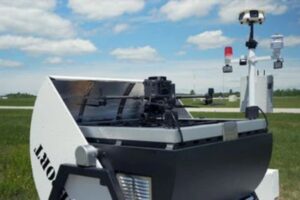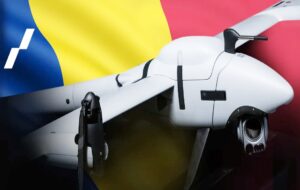Basilica of San Luca at dusk , Bologna Italy
The post Basilica of San Luca at dusk appeared first on DRONESTAG.
Basilica of San Luca at dusk , Bologna Italy
The post Basilica of San Luca at dusk appeared first on DRONESTAG.
Summer 2024 is here, and The Drone Girl has compiled the best deals you’ll find on drones — and drone adjacent products. Whether you’re a seasoned drone enthusiast or a beginner looking to explore the world from above, we’ve got you covered with the ultimate guide to the best summer 2024 drone sales.
Among the standouts? A rarely-seen 40% discount on Autel — which offers up a compelling option for people seeking a drone alternative to DJI. Of course, DJI is trying to seduce pilots with incredible deals of its own — particularly notable given concerns that some members of Congress want to ban future sales of DJI drones.
So with that, here is The Drone Girl’s ultimate guide to the best summer 2024 drone sales:
Though Father’s Day 2024 already passed, the Autel Summer Father’s Day is still going on. But act fast! Sale prices are valid for purchases made either through the Autel Robotics Amazon store or via the Autel Robotics official online store.
The stand-out drone of the sale is the Autel Evo Lite+. This drone usually retails for $1,249, but with this sale, it starts at just $689. The Autel Evo Lite+ was named the best non-DJI camera drone on the market, according to Drone Girl. Its standout features include:
So, take advantage of the Autel Evo Lite+ sale now on Amazon or purchase directly from Autel’s website.
Kick off your summer by getting certified as a drone pilot with Drone Pilot Ground School. All courses are now $100 off as part of their summer Sale—save up to 33%, depending on the package you choose.
Enrolling in Drone Pilot Ground School is your first step towards earning your Drone Pilot’s License and legally earning money flying drones in the U.S. It’s one of the top Part 107 test prep courses and comes highly recommended by Sally French, aka Drone Girl, who used it to ace the FAA’s Aeronautical Knowledge Test.
The DJI Mid-Year Sale 2024 offers discounts on popular drones and gimbals at the official DJI Store, with savings of up to 20%, free gifts, and additional promo codes.
Don’t need another free water bottle? You might be better off shopping for DJI products through Amazon. There, you can really maximize your savings and earn 5% back with the Amazon Visa card. Prices are the same as what you’ll get on DJI’s store, aside from the lack of free gifts — but 5% back might turn out more valuable anyway. After all, 5% back on a $1,500 drone is $75.
The best deal of DJI’s Mid-Year sale is 20% off the DJI Air 3 Fly More Combo. The DJI Air 3, features dual 48MP cameras for wide-angle and 3x medium telephoto shots and 4K/60fps HDR video, professional-grade capabilities like a 46-minute flight time, and omnidirectional obstacle sensing. Also, it’s a lightweight drone at 720g making it an ideal choice for serious photographers looking for a powerful yet more affordable alternative to high-end models like the DJI Mavic 3 Pro.
And now during the sale, you can purchase the DJI Air 3 Fly More Combo for $1,239 (usually $1,549).
Other great deals for the DJI Mid-Year Sale 2024 include:
Have you seen any other great 2024 summer drone sales? Help other Drone Girl readers save and share your finds in the comments!
The post Summer 2024 drone sales: your ultimate guide to deals on DJI, Autel, Part 107 courses and more appeared first on The Drone Girl.
 uAvionix, a provider of command, navigation, and surveillance technologies for drones, has announced that the Oswego City Police Department’s Drone as a First Responder (DFR) program has received Federal Aviation Administration (FAA) approval for operations Beyond Visual Line of Sight (BVLOS) without Visual Observers (VOs) using the uAvionix Casia G ground-based detect-and-avoid (DAA) system. This […]
uAvionix, a provider of command, navigation, and surveillance technologies for drones, has announced that the Oswego City Police Department’s Drone as a First Responder (DFR) program has received Federal Aviation Administration (FAA) approval for operations Beyond Visual Line of Sight (BVLOS) without Visual Observers (VOs) using the uAvionix Casia G ground-based detect-and-avoid (DAA) system. This […] Drone Delivery Canada Corp. and Volatus Aerospace Corp. have announced the beginning of a collaboration to commercialize the Volatus Aerieport Drone Nesting Station in concert with DDC’s Remote Operations Center. This follows the announcement of their planned merger, initially disclosed on May 21st, and serves to illustrate the united strengths of both companies. “This is […]
Drone Delivery Canada Corp. and Volatus Aerospace Corp. have announced the beginning of a collaboration to commercialize the Volatus Aerieport Drone Nesting Station in concert with DDC’s Remote Operations Center. This follows the announcement of their planned merger, initially disclosed on May 21st, and serves to illustrate the united strengths of both companies. “This is […] This year 2024 will mark a turning point for Novadem with a record acquisition of 260 NX70 drones by the French Ministry of the Armed Forces to increase the capacity of NX70 drones within the forces, bringing to more than 440 the total number of drones ordered from Novadem since 2018. At the beginning of […]
This year 2024 will mark a turning point for Novadem with a record acquisition of 260 NX70 drones by the French Ministry of the Armed Forces to increase the capacity of NX70 drones within the forces, bringing to more than 440 the total number of drones ordered from Novadem since 2018. At the beginning of […] Quantum Systems, the Munich-based manufacturer of dual-use reconnaissance drones that use multi-sensor technology to collect data for government agencies and commercial users, is pleased to announce that it has been awarded a significant contract to supply the Romanian Ministry of Defence with its advanced Vector unmanned aerial systems. The contract, valued at approximately 18.4 Million […]
Quantum Systems, the Munich-based manufacturer of dual-use reconnaissance drones that use multi-sensor technology to collect data for government agencies and commercial users, is pleased to announce that it has been awarded a significant contract to supply the Romanian Ministry of Defence with its advanced Vector unmanned aerial systems. The contract, valued at approximately 18.4 Million […]Understanding the Impact of High Temperatures on LiPo Batteries and Best Practices for Safe Usage DRONELIFE presents this guest post by Douglas Spotted Eagle, Director/Client Experience and Pilot at theLIDARPros and Director of Education Programming at drone training and consulting firm Sundance Media Group. As the temperature rises, this post is a timely reminder that […]
The post Hot Cars & LiPo Batteries: A Risky Combination for UAS Operators appeared first on DRONELIFE.
Japanese Developer SkyDrive Collaborates with JCAB and FAA to Bring the SD-05 to Market, Targeting 2026 for North American Expansion by DRONELIFE Staff Writer Ian J. McNabb Japanese “flying car” eVTOL (electronic vertical takeoff and landing) developer Skydrive recently announced that the FAA had accepted their application for type certification for their three-seater “Skydrive” SD-05 […]
The post SkyDrive Begins FAA Type Certification: Paving the Way for eVTOL Innovations in American Airspace appeared first on DRONELIFE.
House Bill Aims to Extend and Enhance Authorities of DHS, DOJ, and FAA to Address Growing Drone Threats By DRONELIFE Features Editor Jim Magill A bill introduced in the U.S. House of Representatives earlier this month would extend the authority of the Department of Homeland Security (DHS) and the Department of Justice (DOJ) to mitigate […]
The post Congress Introduces New Counter-UAS Legislation appeared first on DRONELIFE.
DJI has entered the portable power station arena with two incredibly compelling options that are good enough to already make our guide to the best portable power stations for drone pilots. The company known for making drones in April 2024 dropped two products that are similar to each other — but that have appeal for not just drone pilots but a far broader population. Those are the DJI Power 1000 and DJI Power 500. But between the DJI Power 1000 vs Power 500, which is better for you?
In short, the DJI Power 1000 is about twice as powerful as the DJI Power 500. It’s also twice the cost. For some users, that doubling of power is critical. But for others, you might end up paying twice as much for power storage that you might ever tap into.
If money is absolutely no object, then sure, you might want the DJI Power 1000. But even that’s not always the case. Given its higher-power storage, it’s also about 12 pounds heavier. It comes in at 28.6 pounds versus just 16.06 pounds for the DJI Power 500. Certainly pilots might prefer the DJI Power 500. This guide will help you compare these new DJI stations and decide which best suits your aerial adventures.
So what, exactly are portable power stations for? Consider them the future that’s progressed beyond generators or car chargers. Car chargers just aren’t that powerful, meaning you won’t be able to charge power-sucking products. Or if you can, it’ll be a slow process.
On the other hand, generators can be powerful. But they’re generally massive, they emit gross fumes, and they can be noisy.
Consider portable power stations like the DJI Power 1000 or DJI Power 500 to offer the best of both worlds. Even the larger of the two, the Power 1000, weighs less than 30 pounds. They recharge devices within roughly an hour. And, they’re super quiet. To prove it, the DJI Power 1000 generates just 23 dB, for example. That’s quieter than most household refrigerators.
Power stations like these certainly benefit drone pilots who need to recharge out in the field, but they’re also super useful to campers, who want to keep phones and lights recharged without the blaring noise of a generator disrupting their peace out in nature. They can also have practical function at home — serving as backup power in the case of a power outage.
So with that, here’s a guide to some of the best portable power station options from DJI:
| Feature | DJI Power 1000 | DJI Power 500 |
|---|---|---|
| Battery capacity | 1024 Wh | 512 Wh |
| Maximum power outputs | 2200W | 1000W |
| Fast recharge mode | 1200W | 540W |
| Standard recharge mode | 600W | 270W |
| Weight (lbs) | 28.6 | 16.06 |
| Price (USD) | $999 | $499 |
| Ideal For | Extended trips, multiple batteries | Shorter trips, backpacking |
| Standout Features | High Capacity, Fast Charging | Portable, fast charging, lightweight |
| Ports | Two 140W USB-C ports, AC port, Car port | Two 100W USB-C ports, AC port, Car port |
And let’s say you’re curious about number of times each portable power charger can recharge specific items. Here’s a table comparing recharge times on common products. Of course, if you might recharge, say, a mobile phone twice, a laptop once and a drone 3 times, you’d need to consider some combination of these charging figures:
| Feature | DJI Power 1000 | DJI Power 500 |
|---|---|---|
| Mobile phone | 57 times | 28 times |
| Laptop | 9 times | 4 times |
| Drone | 12 times | 6 times |
| Car refrigerator | 19 hours | 9.7 hours |
Now what about recharging the DJI Power stations themselves? Both devices can recharge fully within 70 minutes. If you don’t have that much time, you can at least get to an 80% charge within 50 minutes.
A true powerhouse, the Power 1000 boasts a massive 1000Wh capacity. This translates to multiple drone battery recharges, making it ideal for extended trips or supporting multiple drones on a professional shoot. It’s also expected to offer fast-charging capabilities, getting you back in the air quickly.
The drawback? It’s fairly heavy at more than 28 pounds. You don’t want to lug this around when you’re out hiking. Given that, this isn’t ideal for backpacking or situations where portability is a major concern.
With a 500Wh capacity, the Power 500 is more compact and portable than its bigger brother. While not quite a powerhouse, it still offers enough juice for several drone battery charges, making it perfect for shorter outings or weekend adventures. It prioritizes fast charging as well.
At just 16 pounds, I’m not calling it light. But, it’s among the lightest portable power stations you’ll find. Consider it a great choice for drone pilots who prioritize easy carrying and want a station that fits comfortably in a backpack.
Using a standard power socket, the Power 1000 supports both 1200W Fast Recharge Mode and 600W Standard Recharge Mode. Meanwhile, the Power 500 supports both 540W Fast Recharge Mode and 270W Standard Recharge Mode.
It’s a similar story with USB-C, where the Power 500 is less powerful versus the Power 1000. Though both have two USB-C output ports, the Power 1000 is 140W with a total power output of up to 280W. The Power 500 is just 100W with a total input power of 200W.
Here’s where the two are practically the same. Both products can connect to solar panels through either the DJI Power Solar Panel Adapter Module (MPPT) or the DJI Power Car Power Outlet to SDC Power Cable.
With their impressive capacities and focus on fast charging, these stations are sure to be game-changers for drone pilots. So which should you choose? The ideal DJI Power Station for you depends on your drone and overall needs. Here’s a quick breakdown to help you decide:
No matter which DJI Power Station you choose, you’ll be well on your way to keeping your drone, and your entire exploration kit (including laptops, lights and phones), powered for unforgettable adventures.
The post DJI Power 1000 vs Power 500: which is better for the price difference? appeared first on The Drone Girl.





